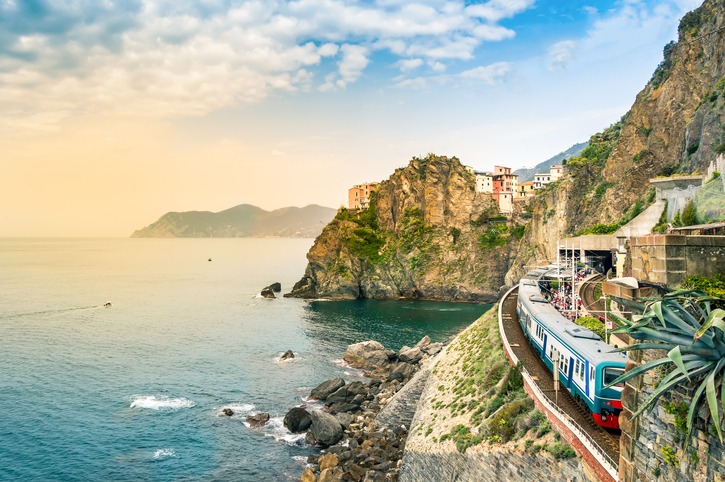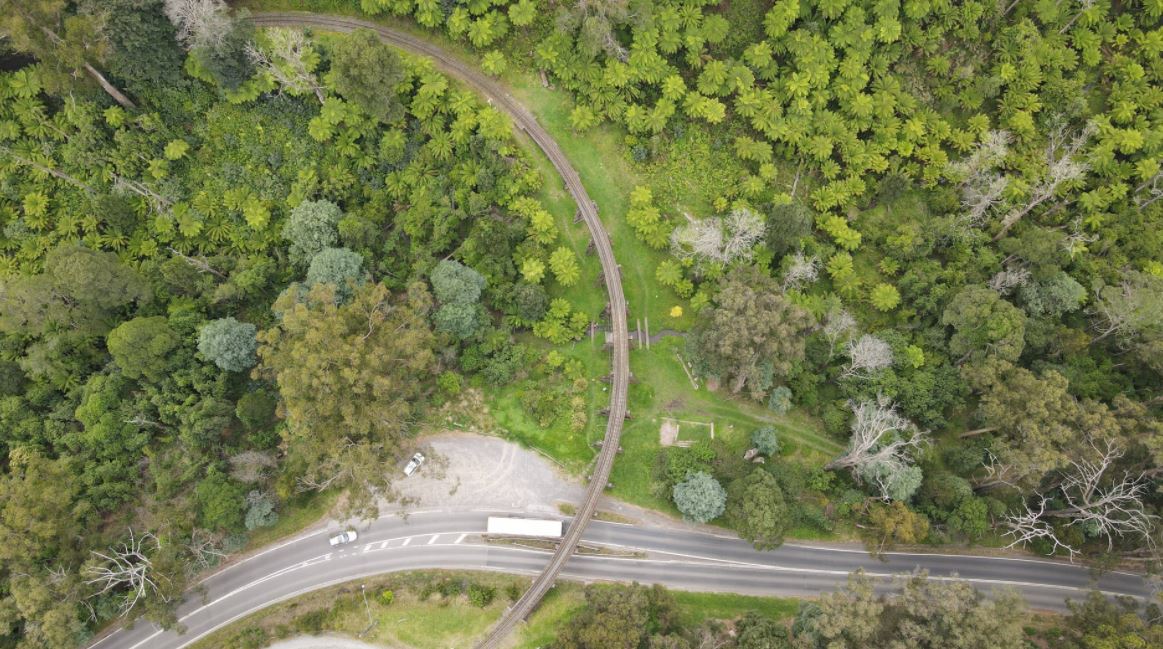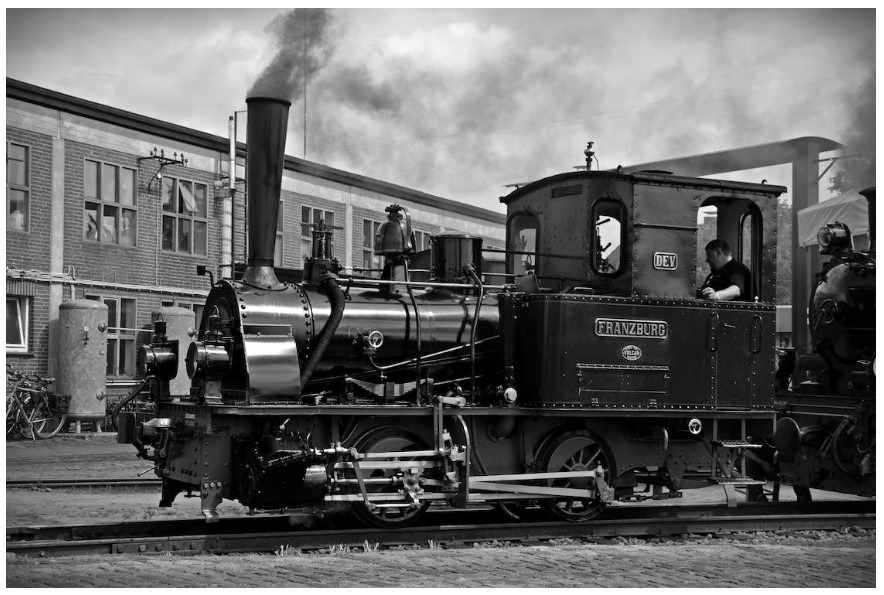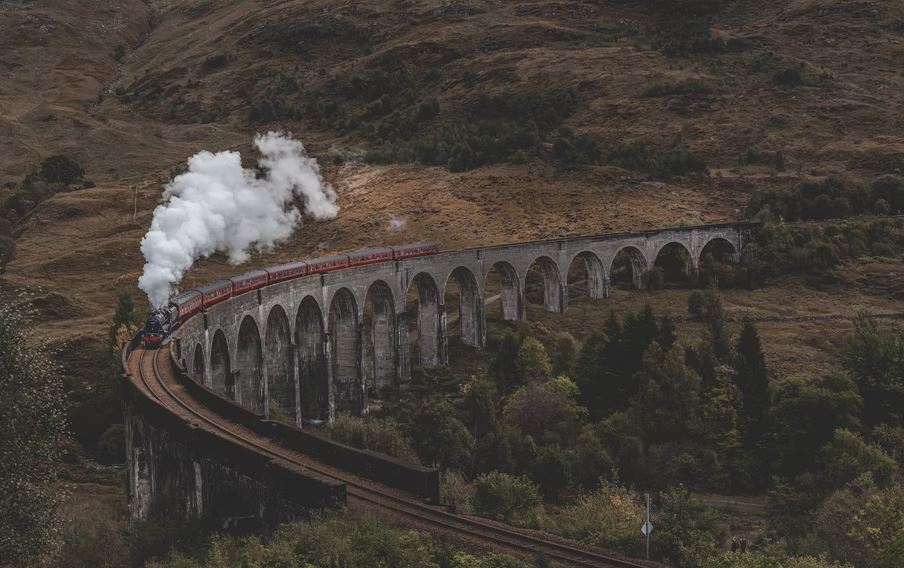Learn the History of the Mauch Chunk Switchback Railway
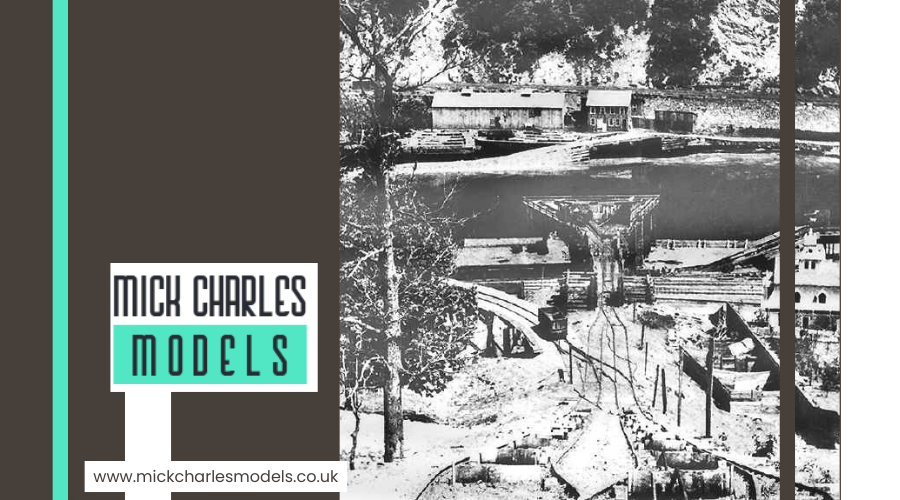
You'll uncover America's first roller coaster in the Mauch Chunk Switchback Railway, which began as an innovative coal transport system in 1827 Pennsylvania. It used gravity and steam-powered inclines to move coal efficiently before changing into the nation's second most popular tourist attraction in the 1870s. The railway reached thrilling speeds of 50 mph and attracted over 100,000 visitors annually until its closure in 1932. Its pioneering design still influences modern amusement rides today.
The Birth of Pennsylvania's Revolutionary Railway (1827)
When necessity drove innovation in 1827, Pennsylvania's first railroad emerged as a pioneering solution to the challenging task of coal transportation. The Mauch Chunk Gravity Railroad revolutionized the way you'd transport anthracite coal from Sharp Mountain's summit to the Lehigh River below.
You'll be amazed to learn that this innovative railway took just three months to complete, making it possible to run multiple daily trips without using steam or animal power. By capitalizing on gravity through an innovative inclined plane system, the railroad reduced coal transport costs by one-third compared to the previous Coal Road.
What began as the Mauch Chunk Railroad would later evolve into the famous Switchback Railway of the 1840s, setting the foundation for Pennsylvania's extensive transportation network and thriving anthracite industry. Like the early iron rail wagonways that preceded it, this gravity-powered system demonstrated how railways could efficiently transport heavy cargo before the widespread adoption of steam locomotives.
Engineering Marvel: Gravity-Powered Coal Transport
The engineering brilliance behind the Mauch Chunk Gravity Railroad lay in its remarkably simple yet effective design. You'll be amazed at how this innovative system used gravity and an inclined plane to move anthracite coal from Summit Hill down to the Lehigh River, cutting transport costs by a third compared to previous methods.
When you look at how the system worked, you'll find that gravity did most of the heavy lifting. The railroad's design made multiple daily round trips possible, revolutionizing coal transport in Pennsylvania.
In the 1840s, they altered it into the Switchback Railroad by adding steam-powered inclined planes, making the system even more efficient. This pioneering approach didn't just serve the coal industry - it actually inspired the development of modern railways and roller coasters.
Much like the metal track systems that would later be developed by Carlisle and Finch in 1896, the Mauch Chunk Railway demonstrated significant engineering innovation in rail transportation.
From Coal Hauler to Tourist Attraction
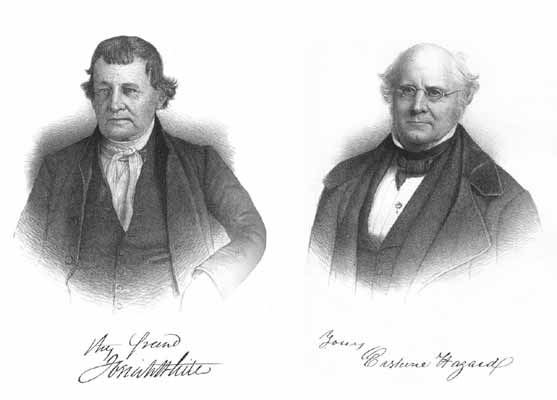
Although initially designed for coal transport, the Mauch Chunk Switchback Railway moved into one of America's premier tourist attractions during the 1870s. After years of hauling coal from Summit Hill under Josiah White's Lehigh Coal and Navigation Company, the railway found new life entertaining thrill-seeking visitors.
The Switchback Gravity Railroad became so popular that it drew over 75,000 visitors annually, making it the nation's second most visited tourist destination after Niagara Falls. This innovative attraction even inspired the creation of America's First Roller Coaster at Coney Island in 1884.
You'd experience an exhilarating ride reaching speeds up to 50 mph as you descended the mountain's dramatic slopes and loops. Much like the heritage railway preservation movement in Britain, enthusiasts worked to maintain the historic route for future generations. Sadly, the railway's tourist era came to an end in 1932, succumbing to the combined pressures of automobile travel and the Great Depression.
The Rise of America's First Thrill Ride
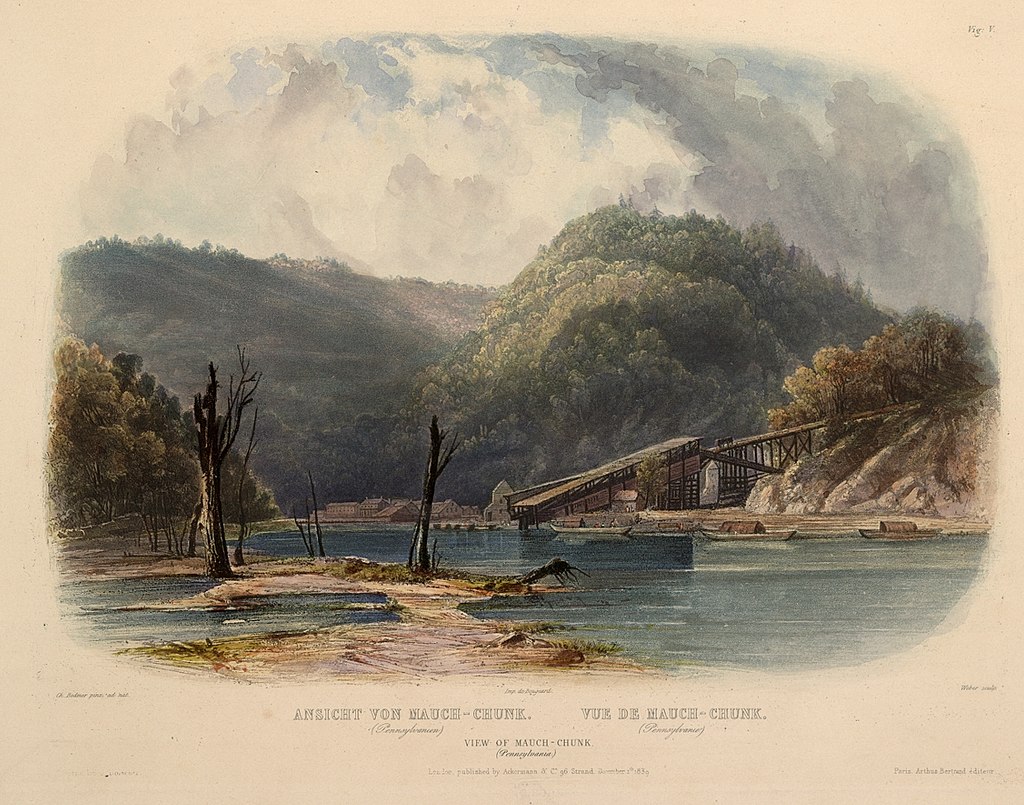
Pioneering a revolutionary chapter of entertainment, Mauch Chunk Switchback Railway revolutionized leisure travel in America by offering an unparalleled thrill experience. As the first railroad dedicated to passenger transport, it attracted over 100,000 thrill-seekers annually who couldn't resist its scenic views and hair-raising trolley ride through the mountains.
You'll be fascinated to know that this innovative attraction became so popular it was second only to Niagara Falls as a tourist destination. The railway's dramatic descents and loops earned the area the nickname "Switzerland of the United States." Its success directly inspired the creation of America's first roller coasters at Coney Island in 1884, bridging the gap between traditional railroads and modern amusement rides. Today, you can still trace this historic legacy on the preserved Switchback Railway Trail.
Steam Power and Technical Innovations
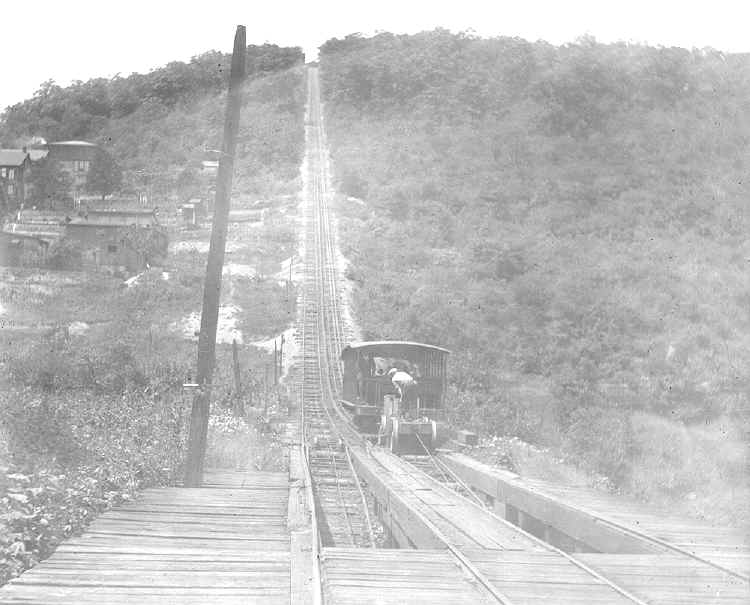
How did steam power revolutionize the Mauch Chunk Switchback Railway? In 1845, you would've witnessed a remarkable technological advancement as the railway incorporated steam-powered inclined planes at Mt. Pisgah and Mt. Jefferson. This innovation transformed the once mule-powered operation into an efficient mechanized system.
At the peak of each mountain, you'll find stationary steam engines that were essential to the railway's evolution. These engines would pull empty coal cars up the steep grades, while gravity helped them coast back down. This ingenious combination of steam power and inclined planes significantly expanded the railway's coal hauling capabilities.
As you explore the history of coal transportation, you'll discover that these improvements made the Mauch Chunk Switchback Railway one of the era's most advanced and productive systems.
Impact on Early Railroad Development
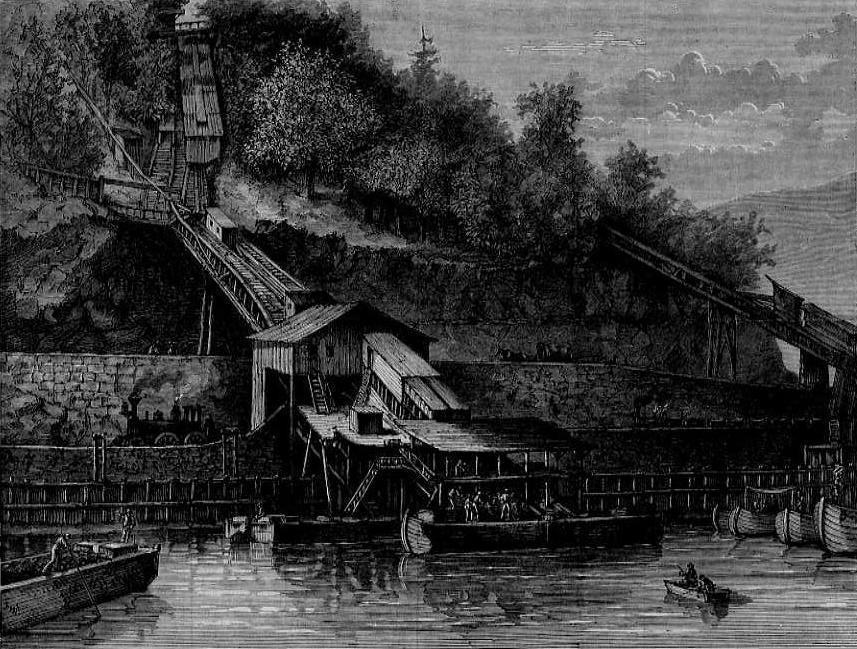
When the Mauch Chunk Switchback Railway emerged as America's second railroad in 1827, it set essential precedents for the nation's expanding rail network. You'll find that the Summit Hill and Switchback Railway revolutionized coal transportation along the Lehigh Valley, becoming a model for future railroad development.
- Pioneered gravity-powered transport systems that influenced Central Railroad of New Jersey's design
- Demonstrated the viability of steep-grade rail transportation
- Established the first successful freight rail operation in Pennsylvania
- Created a blueprint for efficient coal delivery that other railroads would follow
- Introduced innovative inclined plane technology that altered railroad engineering
The Mauch Chunk Railroad's legacy lives on through the Switchback Trail, where you can experience America's First roller coaster-inspired railway path. Its influence on railroad development shaped the future of American transportation infrastructure.
Peak Years and Record-Breaking Tourism
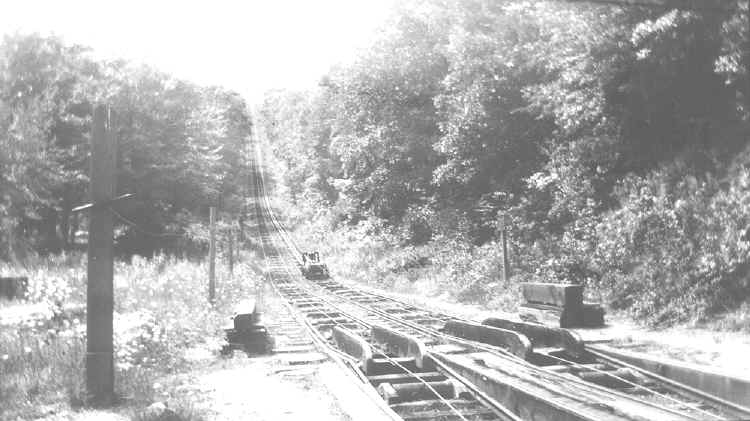
The Mauch Chunk Switchback Railway moved from a coal transport system into America's second most popular tourist destination in the 1870s, drawing over 75,000 visitors annually.
You'd experience a thrilling ride that reached speeds up to 50 miles per hour along the five miles of track, earning the region its nickname as the "Switzerland of the United States." The Coal and Navigation Company altered their Coal Road into an exciting tourist attraction, where you'd coast down the hill on gravity-powered cars.
The back track system, originally designed to return empty cars back up the mountain, became part of the tourist experience. This innovative railroad was sold multiple times before ultimately closing in 1933 due to the Great Depression, but not before inspiring America's first roller coaster at Coney Island.
Legacy as Roller Coaster Inspiration
Many roller coaster enthusiasts can trace their favorite thrill rides back to the Mauch Chunk Switchback Railway, which directly inspired America's first roller coaster at Coney Island in 1884. What started as a way to transport coal down the mountain evolved into an amusement park sensation that would shape the future of thrill rides for generations.
- Empty cars would race back up the track at thrilling speeds
- Miles of raised, curving tracks set the standard for modern designs
- Mauch Chunk's gravity-powered system became the blueprint for roller coasters
- The railway proved that visitors would pay for mechanical thrills
- Its legacy lasted until the Great Depression
You'll find the Switchback's influence in every loop, descent, and hairpin turn of today's roller coasters, cementing its place as the true ancestor of modern amusement park rides.
Preservation and Modern Trail System
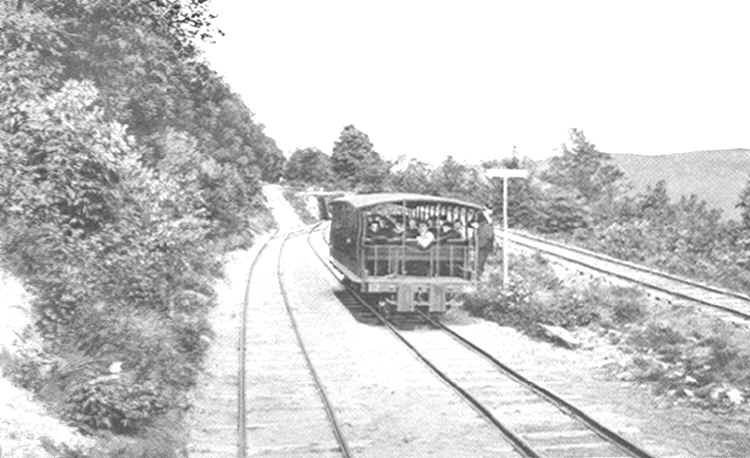
While the Switchback Railway's role in roller coaster history lives on in modern amusement parks, its physical legacy endures through a different kind of recreation. Today, you can investigate the historic route between Summit Hill and Mauch Chunk on the Switchback Trail, which earned National Historic Recreation Trail status in 1980.
As you hike or bike the trail, you'll uncover remnants of the original stone path that once transported coal to Philadelphia via the Lehigh Canal.
The trail's preservation lets you experience the same continuous grade that coal mining operations used, complete with visible anthracite dust from its industrial past. For up-to-date information on trail activities and events, you can visit the National Canal Museum in Easton, where you'll find resources to enhance your historic railway quest.
Economic Influence on Anthracite Region
Through its revolutionary transportation system, Mauch Chunk Switchback Railway plunged Pennsylvania's anthracite region into an economic powerhouse during the 19th century. You'll find that White and Erskine Hazard's ingenious design hauled the empty coal cars up the mountain while Mining operations flourished in the town of Mauch Chunk.
The railway's efficiency slashed coal transportation costs by a third, making it more accessible until the Great Depression resulted in reduced demand.
- Reduced coal transportation costs by 33%, revolutionizing regional commerce
- Connected mining operations directly to the Lehigh Canal system
- Created hundreds of jobs in hauling coal and maintaining infrastructure
- Transformed the region into Pennsylvania's primary energy supplier
- Later amplified tourism revenue, diversifying the local economy before Hugh Moore's initiatives

